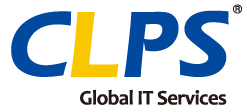CLPS Innovation Lab: A Driver of Innovation – What you need to know about CLPS (II)
After 15 years of continuous growth, CLPS has morphed into a multinational company status. This was made possible through synergy and cooperation from all its subsidiaries and business departments, locally and internationally. In addition, some institutions under the Company deserve gratitude for working closely and strategically with various business departments to jointly strive for the vigorous development of CLPS.
Let’s take a look on these institutions and see how they provide support for CLPS, this time is the engine of technological innovation – CLPS Innovation Lab (i-Lab).
CLPS has garnered exponential experience in the financial IT field throughout its business development. To establish its core competitiveness, CLPS has highly invested in research and development to explore and develop its own products. In 2015, CLPS launched two products, the credit card system and virtual bank training system. At the same time, it has established the CLPS Research.
In January 2020, CLPS Research has renamed to “CLPS Innovation Lab” as the center of research competency. Building upon the legacy of CLPS Research’s achievements, CLPS i-Lab remains dedicated and focused on exploring cutting-edge technology, committed to the research and application of innovative technologies, and adheres to CLPS’s growth strategy to promote products and solutions based on new technology, research, and application innovation.
CLPS i-Lab researches on the leading financial technology and recognizes how the technology can be implemented. The most notable achievements of CLPS i-Lab include the application of big data, robotic process automation (RPA), and blockchain in banking. In addition, it has also implemented series of independent products such as integrated transaction acquiring platform, online smart debt collection platform, training management system, and testing system, which our clients have been highly commended.
At present, the main research trajectory of CLPS i-Lab includes big data, cloud computing, artificial intelligence (AI), and RPA, among others.

CLPS Innovation Lab’s strategy on cutting-edge technology research
Ms. Jing Zhao, Senior Vice President of CLPS Innovation Lab, summarized its strategy on cutting-edge technology research: “Briefly speaking, we follow the model ‘research→matching→application→innovation’.”
“For example, RPA is one of the trendy technologies today. First, we analyze the advantage of RPA, as well as its market demand. After conducting a preliminary assessment, we will match this technology with our existing development capability.”
“The next step is to select a mainstream RPA tool to uphold the actual implementation. In the course of implementation, the technology is being promoted and used in the company’s internal system to optimize the working process of our HR, administration and finance department. It is also extended to the client’s side in the banking and securities, among others, to identify their needs on such technology, as well as to the functions that can give full play to the technology’s edge.
“In addition, we explore the integration of other technology, such as RPA with optical character recognition (OCR), a branch of artificial intelligence (AI) technology. We continuously research and innovate on the trajectory of RPA+AI after determining its potential.”
CLPS Innovation Lab’s trajectory is based on the comprehensive recognition of market demand and capability of CLPS.
There is no doubt that big data plays an important role in technological development. CLPS maintains a number of talents with technical capabilities in big data.
“CLPS i-Lab aims to take full advantage of the company’s existing big data capabilities and to determine on how to better integrate them with the market demand.” Ms. Zhao said.
CLPS i-Lab currently conducts big data-based researches including but not limited to big data portrait, precision marketing, decision-making, account management system, digital user management, and talent intelligent recommendation.
“Résumé matching in our internal system is an example of our functional application of big data.” Ms. Zhao said, “We have a large number of résumé piled up in our ERP system to search for a qualified IT talent. In the past, our talent acquisition team identifies this IT talent through the common relational database for a project position, which is inefficient and does not support full-text matching. Through the power of big data, we introduced the ES search mode, which can achieve an accurate matching and intelligent recommendation between the talents and the project. As a result, it significantly improves the efficiency of our IT services.”
The research subjects of CLPS Innovation Lab are based on the recommendation and needs of CLPS’s clients.
Ms. Zhao said, “The basis of our research on distributed technology came from the daily work experience of our technical personnel and client managers. They noticed that many large banks want to achieve the “open banking” trend. However, since the traditional system is not distributed and cannot support API outreach, the “legacy systems” needs to be migrated from Mainframe, AS400, and other traditional platform to cloud. We have had a number of successful implementations on this area, such as the development of a distributed points system for a well-known international bank and the migration of systems for several large banks in Hong Kong.”
In light of the 15th anniversary of CLPS, Ms. Zhao highlighted her expectation for CLPS i-Lab in the future. “We hope to produce and contribute more innovations in the fintech industry, develop products and solutions suited for our client needs, and create a stable competitive landscape for CLPS”, she said.
“The reason why we changed our name to ‘CLPS Innovation Lab’, with emphasis on ‘innovation’, is to achieve our goal of integrating our existing capability and project implementation experience with cutting-edge technology to innovate products, services and solutions”, Ms. Zhao ended.


Follow Us